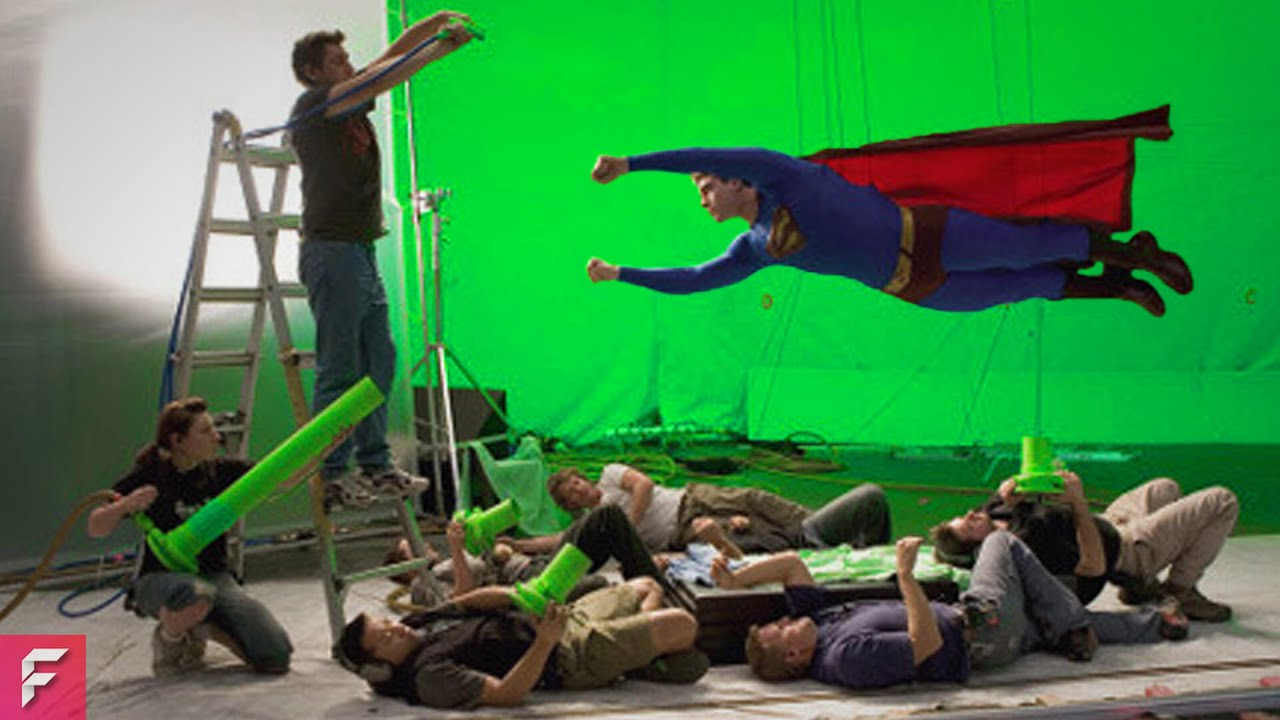
Outer Space Heroes!
Rocket Raccoon hides on a tree branch above the ground. He sees his enemies moving through the forest. Suddenly, Rocket begins leaping from branch to branch. He sets off bombs. Explosions light the sky. The enemies cannot escape!
This scene is in the 2017 film Guardians of the Galaxy Vol 2. On set, Rocket was played by an actor. The actor’s movements were recorded using motion capture to match the computer-generated characters. Later, filmmakers used CGI, computer-generated imagery, to turn the actor into a Raccoon!
The film includes other computer-generated characters, too. Baby Groot looks like a tiny tree. The film begins with him dancing. The filmmakers used both CGI and motion capture to create this scene. Together, these effects made Baby Groot’s dance moves look real.
Filmmakers also used visual effects to make some of the film’s places. The planet Ego has unusual trees and waterfalls. Colorful bubbles float in the air. The entire planet is made up. CGI made it seem real!
What Are Visual Effects?
Visual effects are tricks filmmakers create during post-production, which is after filming has ended. They are often combined with practical effects and live-action shots. Filmmakers use visual effects for scenes that would be impossible to shoot on set. Fictional things, such as monsters or alien worlds, become real on screen.
Visual effects also make it easier to film difficult or dangerous scenes. For example, filming from great heights is tricky. Filmmakers can use visual effects to create the views instead!
Visual effects are made in many ways. CGI is common. Artists create 3D images using computer software. These are added to films during post-production. On screen, the images look real!
A visual effect called set extension saves time and money. Some sets, like castles, are difficult to build. A construction team builds the part of the set where the actors perform. A visual effects team creates the rest of the building or landscape with CGI!
Compositing is another important visual effect. This is when artists combine separate images into one image for a scene. For example, live-action scenes are often shot in front of a green screen. They are filmed multiple times. Then the shots are combined using a computer.
Compositors can also add snow, rain, fog, or any other thing that was not on set during shooting. They can also remove things, such as wires, stains, or reflections that do not belong in a scene.
History of Visual Effects
In the early days of film, computer-generated visual effects were not possible. Instead, filmmakers used practical effects. Miniatures and matte paintings, fake sets made of paint, were often used to create new places. Early movies such as 1933’s King Kong used matte paintings to create jungle scenes!
Practical effects were also often created with cameras. One popular camera trick was the double exposure. It made ghosts look real!
The 1970s saw the introduction of digital visual effects. The 1973 film Westworld was the first to use 2D computer graphics. Two minutes of computer-generated pixilation were used to show vision through a robot’s eyes. Three years later, Futureworld was the first to use 3D computer graphics!
The 1977 blockbuster hit Star Wars: Episode IV – A New Hope broke new ground in visual effects. The filmmakers invented new ways to use cameras, computers, and miniatures to create epic space battles!
Visual effects skyrocketed during the 1980s. Many CGI firsts happened during this period.
Tron, released in 1982, had more CGI footage than any film ever before. Two years later, The Last Starfighter was released. It was the first film to feature spaceships and planets made with CGI instead of miniatures. The 1985 movie Young Sherlock Holmes featured the first completely CGI character to appear on the big screen. The character was a fearsome knight made from stained glass!
More CGI firsts were to come. The 1989 film Indiana Jones and the Last Crusade was the first movie to contain all-digital compositing. Filmmakers used it to make a character shrivel to ash!
The 1989 film The Abyss was the first to use CGI to make water effects. Artists created a 3D alien that shimmered and flowed just like seawater!
Visual effects continued expanding through the 1990s; filmmakers began mixing CGI and live-action in ways never seen before. In 1993, Jurassic Park was the first film to feature realistic CGI animals.
A year later, Forrest Gump used CGI in a fun way. Artists used compositing to insert past presidents and other historic figures into scenes. The characters appeared to be talking directly to Forrest!
Blockbuster Visuals
Today, more movies than ever are made with CGI. CGI and motion capture brought Gollum to life in the Lord of the Rings film series. CGI was also behind many characters in the Harry Potter films. They included the house elves, dementors, and the Hungarian horntail dragon.
The 2007 film The Golden Compass had nearly 1,200 CGI images. The talking animals, the Arctic landscape, and the magical dust looked real. But they all were made on computers!
Superhero films also have a lot of visual effects. For example, characters often fly or leap from tall buildings. The actors are attached to wires and cables to shoot these scenes. Later, artists use computers to erase this equipment.
Many stunning places in superhero films are also made with CGI. The city of Atlanta, Georgia, became Wakanda for the 2018 film Black Panther. The made-up world of Atlantis sparkles with CGI colors in the 2018 film Aquaman!
Moving Forward
Visual effects continue to improve as technology advances. For example, artists struggle to make CGI humans look real. Their facial expressions often seem odd. Motion capture advances should solve this problem. CGI humans could soon look and move like human actors!
Camera systems are also changing. Future filmmakers may not need blue or green screens to create fictional locations. Instead, new camera systems will place actors directly into CGI locations during a shoot. Film possibilities are endless with visual effects!



 About BeeLine
About BeeLine